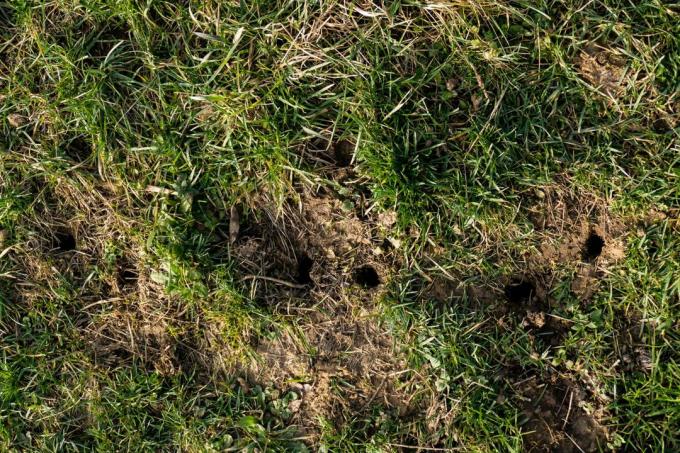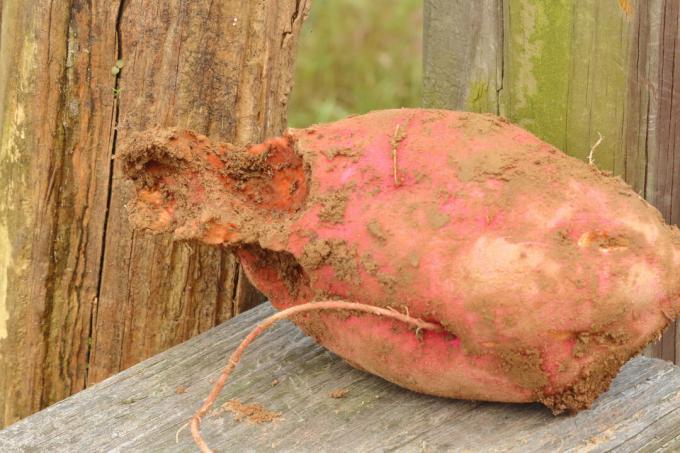Problems with voles in the garden? We show you how to recognize the small rodents and what really helps to successfully control vole.
contents
- Vole: profile of the pest
- Recognizing voles in the garden: differences from the mole
-
Driving away voles: mechanical control methods
- Fight voles with box traps
- Fight voles with wire baskets
- Chase voles away with noise and noise
- Driving away voles: chemical control methods
- Home remedies for voles
As cute as the little rodents appear, voles can cause considerable damage in the garden. In the following you will find out everything about the pest and which means are suitable for controlling and driving away voles.
Vole: profile of the pest
The genus of voles (Arvicolinae) consists of several types. These include small field mice and water voles, but also the muskrat up to 35 cm in size. They prefer to lay their shallow tunnel systems in moist, light to medium-heavy soil. The rodents feel particularly at home near watercourses and embankments. The loners do not hibernate and can therefore damage roots over the winter. The litter performance of the females is particularly noteworthy. A female can have up to 20 young animals per year, which leave the nest after two weeks in order to create their own tunnel system. The most important enemies of the vole include weasels, foxes, polecats, martens, owls, birds of prey and of course the domestic cat.
Voles Recognize in the garden: differences to the mole
Since voles are often nocturnal and remain in their cave system, identification is almost exclusively possible via the damage to the plants. The herbivores like to nibble on root vegetables, potatoes and perennials - and unfortunately fruit trees and bushes are often used as a source of food. The mice mostly limit themselves to the roots and subterranean parts of the plant. In the case of root vegetables, the damage caused by the large feeding points is often easy to identify. An infested fruit tree can usually only be seen through a generally sickly overall appearance such as falling or yellowed leaves.
So if you notice major damage to the plants or generally sickly plants recognize without being able to assign a specific disease, it is worth taking a closer look at the Garden soil. Because the voles have to move the excess earth from their tunnel system somewhere. If you find any small, elongated ejections, it is very likely that they belong to a vole. Further indications are irregular removal of the piles of earth, which are usually also interspersed with roots and plant material. Molehills, on the other hand, are larger, rounder and more regularly spaced.

Before even thinking about fighting it, it must first be ensured that it really is voles. If moles are accidentally fought, fines of up to 50,000 euros are possible. Aside from noting the shape of the hill, there is another trick to identify the culprit responsible. All you need to do is find a hole in the tunnel system. These are mostly located on the elongated piles of earth. A carrot is now simply inserted into the hole and buried lightly. After about a day, you can check out the carrot. If it has been eaten, it is most likely voles, as moles only eat insects, earthworms and other animals.
tip: There are several more Animals digging holes in the garden. We will show you which ones they are and help to assign the holes in your garden to the appropriate animal.
Driving away voles: mechanical control methods
The mechanical methods include all types of traps such as box traps and wire baskets that you put into the planting hole when you are planting trees. We introduce the individual traps that you can use to catch voles. By the way, you will achieve the best control results in late autumn or early spring.
Fight voles with box traps
When setting up box traps (and other mechanical control methods) there are a few things to keep in mind so that the desired success is achieved. Always work with gloves and be careful. Before setting up, the trap should be left outside for at least one night, preferably with contact with the ground - this will dissipate the human smell. Place the trap correctly and put in fresh bait before setting it up. Celery and carrot pieces are ideal for this. It is also particularly important to regularly check and clear the traps.

Fight voles with wire baskets
Another method of protecting against voles is through wire baskets, which you can either buy in a store or simply make yourself from wire mesh. If you want to make such a basket yourself, make sure that the mesh size is a maximum of 15 mm. For example, if you want to plant an apple tree, first dig a sufficiently large hole. Then line the pit with two lengths of wire mesh (cross over) - do not leave any loopholes for the voles. Put the tree in place (voles especially like to nibble on young apple trees) and fill the hole with soil. At the end, simply press the wire mesh carefully around the trunk and put another layer of soil on top. Your young trees are already protected from the voracious rodents and can grow and gather strength in peace.
Chase voles away with noise and noise
But voles can also be chased out of your own garden with noise. For example, dig empty glass bottles in the ground and let the wind do the rest of the work. The wind will blow into the bottle and create sounds like a flute that will hopefully chase the voles out of the garden. Special vole and mole repelling devices should work according to the same system. These pillars are stuck in the ground and often operated by solar cells. The devices emit sounds and are intended to drive away rodents, but their effect is highly controversial. A cheaper method is definitely the variant with the old glass bottles in the ground. It is best to gather your own experience with these methods of dissuasion.

[Photo: She Homesteads / Shutterstock.com]
Driving away voles: chemical control methods
You can also use poisonous bait, which often consists of dried carrots and is therefore eaten by voles. These contain the active ingredient zinc phosphide. These baits are placed in the vole exits and are eaten by the rodents there. Note that these baits must not be laid openly as they are not just for Voles are poisonous but can also be dangerous to our pets - so be carefully.
Home remedies for voles
Since voles have a very fine nose, you can also use simple home remedies to deter rodents. For example, you can pour sour buttermilk into the aisles and the foul-smelling butyric acid will do the rest. Close the aisles after pouring out so that the unpleasant smell of the butyric acid cannot evaporate into the air, but remains in the vaulting outlet.
Another way to get rid of voles is to plant a variety of crops. You can find out which ones in our special article Plants for repelling voles are suitable.



